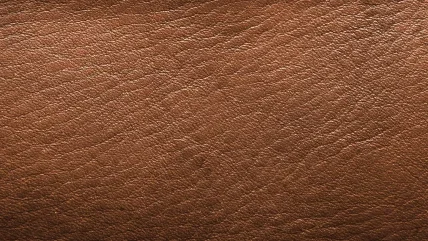
Many specifications for the performance of leather, particularly the European CEN specifications, have different performance requirements for the three main categories of leather type; aniline, semi-aniline and pigmented finished.
This is intended to reflect the expected variation in performance of certain characteristics of the leather, eg a pigmented finished leather would be expected to have much better lightfastness than an aniline leather due to opacity of the pigment found in the finish. From a testing point of view, it is essential that no confusion exists in the identification of leather types. There are also commercial issues regarding the supply of leather: a customer orders what they perceive to be aniline and will pay a premium for that product and needs to be sure that what is received is aniline leather. However, modern leather processing has successfully developed finishing techniques that make it difficult to distinguish between these types, especially between aniline and semi-aniline.
From a commercial point of view, this is a good thing as we now have that desired aniline look and feel in a leather that performs better than the traditional aniline.In addition to these complications, we have also found that there is some ambiguity in the ‘official’ definitions of some of these leather types.
Current definitions
From discussions with tanners, users of leathers and other leather technologists, it would appear that there is some confusion within the industry, particularly over the definition of semi-aniline. In a small survey, twelve people were consulted and all agreed that aniline leather should not contain any pigment in the finish and that a pigmented finish should.
However, there was some confusion over semi-aniline; eight thought that semi-aniline should contain pigment and four did not know if it should or not. There are various publications available that give definitions of some, or all, of the three leather types. These are summarised in Table 1.
The various definitions of aniline leather are relatively consistent in that they all state that it should not have a finish containing pigment. They are also consistent in their interpretation of pigmented finished leather. However, just as the findings of our small survey highlighted some confusion, there are differences in the definition of semi-aniline, particularly the British Standard definition.
In one respect it contradicts itself and the other definitions in that if a leather has two basic coats of finish, both of which contain pigment, it is almost certainly going to conceal the natural character of the surface. A two-tone leather such as that described as semi-aniline in BS2780 more closely meets the definition given in the same document (and other literature also) for pigmented finished leather with respect to description and expected performance.
The solution
It is clearly unacceptable to have different definitions for the same type of leather. Therefore, it is clear that the currently available ‘official’ definitions need to be amended and harmonised. They should also be updated to take into account some of the more modern leather finishing techniques.
It is vitally important that when defining a leather for testing or arbitration purposes, there be no room for confusion. Therefore, BLC have summarised the general principles of the various definitions available and routinely use the following definitions:
Aniline: Leather that has been dyed by immersion in a dye bath and may or may not have a finish applied to the surface. However, if it does have a finish on the surface, it should either be colourless or coloured only with a dye. The finish should not contain any pigment particles (Figures 1 and 2).
Semi-aniline: Leather whose finish only contains a small quantity of pigment. The natural characteristics of the leather surface should remain visible when viewed at low magnification (Figure 3).
Pigmented finished: Leather to whose surface a finish containing pigment particles has been applied and the natural characteristics of the leather surface are concealed by the finish (Figure 4).
Some new leather finishes have only a small amount of pigment incorporated into the finish – so small that it is not possible to determine by eye thus making it virtually impossible to distinguish between aniline and semi-aniline. From a commercial point of view, this makes good sense as it improves the performance of the leather to some degree, particularly in terms of lightfastness, and can level out variations in surface colour whilst still retaining the desirable aniline appearance. However, from a testing point of view, it is essential to know if the finish contains pigment or not, otherwise the leather may be tested to the wrong specification. Therefore, BLC use microscopic techniques to determine the presence of pigments in the finish (Figures 5 and 6). Whilst this technique is more time consuming and requires specialist equipment, we have found it to be much more reliable than other more subjective methods.






